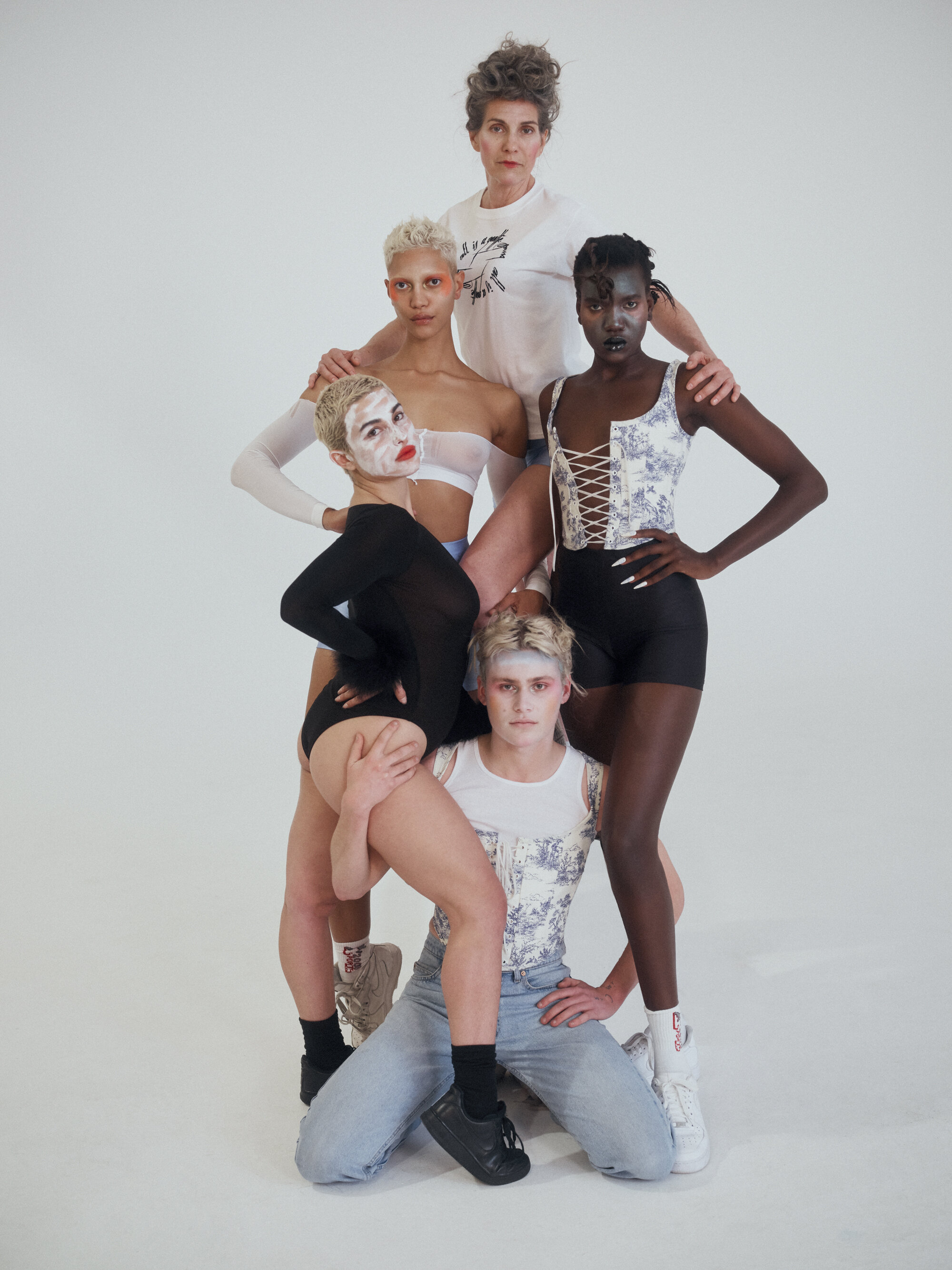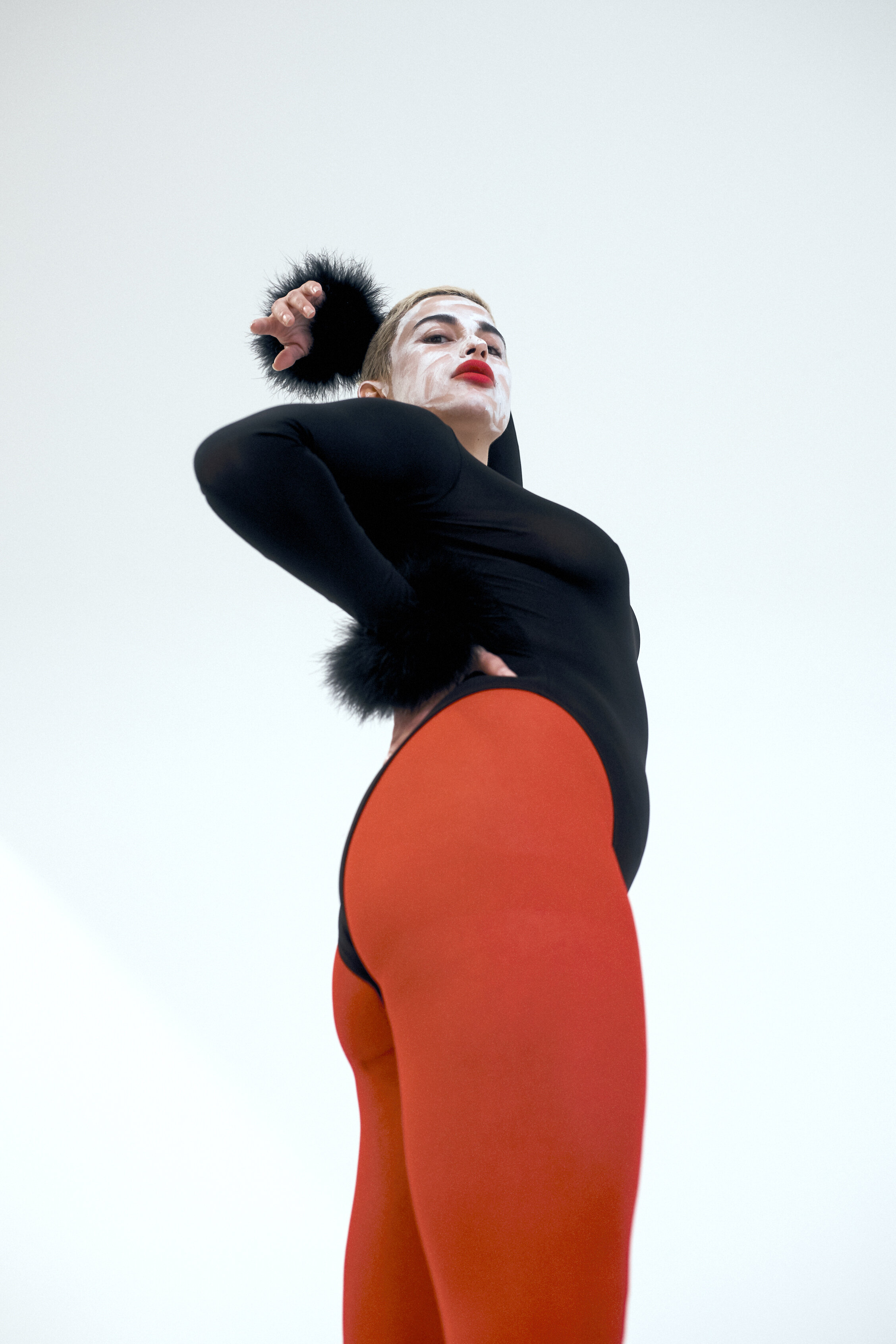Q&A | all is a gentle spring
by Morgan Vickery
Defying the status quo sans gender and season seems second nature to Isabelle Hellyer, who launched the non-conforming label, all is a gentle spring nearly two years back. Born in Australia, the brand newly relocated to Southern California, where corsets and catsuits coexist. Inspired by historical dress, and driven by sustainability, Isabelle crafts thoughtful, one-of-a-kind garments, made to express the individual wearer. We caught up with the nostalgic, forward-thinking designer on all things gentle spring.
How has the change in environment influenced and/or changed your work?
From the very beginning, we’ve received so much support from the States. At a certain point, we were sending a lot of garments to the US, and given so much of the pollution from fashion comes from freight, it felt appropriate to try to produce in Los Angeles with fabrics sourced locally. Downtown LA is a historic garment industry hub I think any designer would be excited by. I was born in Southern California but raised in Australia. It felt like a fitting homecoming, bringing gentle spring to the States. We still have a wonderful, trusting relationship with our Melbourne seamstresses; so by the end of the year, we’ll be able to produce responsibly and locally for both of our largest markets.
Where did your love for historic costume originate?
It’s hard to say with childhood obsessions. My Dad was working as a historian when I was younger, that probably had a part in it. I had these Little Women paper dolls which I obsessed over. And Rococo styles have always appealed to me, a ‘robe à la française’ does something to the pleasure centers, it’s an erotic, excessive, cup-runneth-over garment.
In your view, how much influence does costume design have on daily dress? How has the relationship between the two changed throughout the decades?
When we say ‘historic costume’, we’re talking about the way societies dressed in the past—ordinary people, members of the court, and royals. Generally, we look at fashion plates and illustrated encyclopedias for reference, rather than period film or theatre. I think we probably operate between fashion and costume design, because we’re quite fixated on history, but we marry the elements borrowed from the 17th and 18th centuries with the demands of modern life. The goal is always to make garments you can wear everyday.
We don’t have to be conscious of our clothes looking too much like dress-ups either. There’s a good deal of costume in everyday dress nowadays, or at least online dress. Instagram has encouraged more narrative, extreme dressing. We used to say eye-catching, but agencies say thumb-stopping now. With micro-trends like milkmaids and bonnets, the fashionable versions of the clothes don’t really deviate from the costume-shop versions, and I suspect that’s where some people source their pieces from. It’s totally undiluted. I love it.
As a young brand, how have you overcome obstacles to control the sustainability factor?
We’re limited in terms of research and development—we can’t afford to produce biodegradable packaging from seaweed, or mill our own recycled fabrics. Luckily, there’s often two paths to the same destination. If we’d like to make a collection from entirely post-consumer fabrics, we can source the best second-hand curtains and bedspreads and repurpose those. The cheapest production methods are rarely the most sustainable, and because we’re not beholden to investors, there’s no outside pressure to cut those corners. As a small brand we’re more nimble, and better positioned to make more sustainable choices.
Charli XCX, Rowan Blanchard, Kelsey Lu and Caroline Polacheck have been spotted in your corsets. If you could dress anyone past or present, who would it be and why?
I’d love to do tour costumes for a musician. I can see us producing incredible Spandex catsuits for Dana Dentata.
On the brand home page, a quote reads, “fear is the horse, you are the rider.” Why did you decide to share this with your community? Does this have a special meaning to you?
This is something my friend Agi would say to me. I love the gym, which is reflected in a lot of gentle spring, and Agi helped me get into it. He’s the best workout partner. Fear is the horse was a sort of Gym-spo phrase he’d say, which I took to mean “this is new, difficult, and painful, but don’t give up.” You can tame the horse, master the thing you fear. That’s a good way to come at life.
Despite our current situation, What’s next for gentle spring?
COVID-19 has affected all of us. It’s certainly slowed things down for gentle spring, but we’re still working. We’ve really expanded our use of repurposed materials. We have an experimental, completely recycled capsule collection on the way, produced entirely with found fabrics we’ve spent the last year collecting. The garments are joyful, picture Gina Lolobrigida in ‘Come September.’
Producing with recycled materials, I will say, is more labour-intensive, or at least more time consuming start-to-finish. Sourcing these materials is very different to looking through a catalogue or going through swatch sheets. There’s so much digging, and I’ve had to abandon certain ideas because I just can’t find the right material. A lot of it is luck. You’re also constrained by how much of something you find. Sometimes there’s only enough meterage for a top, not the dress you had in mind.
Our next larger scale collection is all about gymnastics and weightlifting. We want ordinary people dressing like oiled up bodybuilders. We’re taking corsetry techniques and applying them to technical fabrics like Spandex. We’re doing cool-down clothes, like tracksuits, with entirely recycled fibers. We’ve sourced some incredible dead-stock tees too. In every instance, we’ve found that these more conscious material choices have improved the final product. To count as true progress, the sustainable version of the garment has to be equal or superior to the traditional version.
Our series of artist collaborations, which we began with our friend Gian Manik, will continue next year with Tim Hardy, an Australian photographer who we’ve collaborated with extensively—he photographed some of the images in this story [see above]. I love the way he makes his work. He’s constantly shooting, and later looks through his archive to zero in on the most compelling detail of a photograph, usually with some erotic subtext. I can’t wait to interpret his photographs as prints.
Photography by Georges Antoni
Creative Direction by Isabelle Hellyer
Styling by Kurt Johnston
Makeup by Joel Babicci
Hair by Kyye Reed










